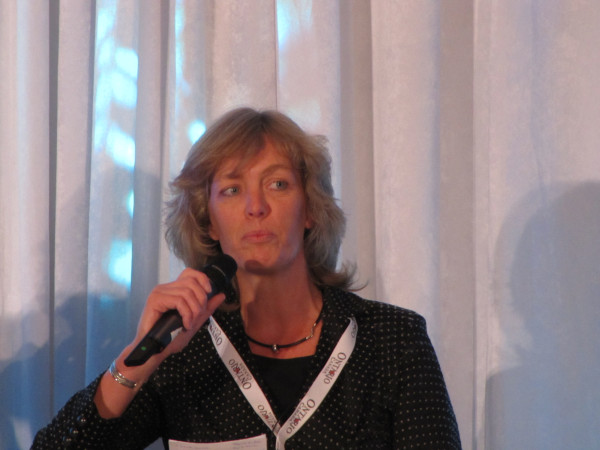In advance of Ontario’s Global Water Leadership Summit last week, Water Canada spoke with Aleid Diepeveen, director of the innovation program in water technology for the Netherlands Water Partnership (NWP), to find out how her country has tackled coordinating and exporting its water expertise.
Water Canada: How did the NWP come to be a voice for the industry in the Netherlands? Ontario is aiming for something similar with its proposed Water Technology Acceleration Project (pdf).
Aleid Diepeveen: When the partnership started in 1999, the aim was to organize a partnership that, as an intermediary organization, would facilitate communication between government, knowledge institutes, the private sector, and NGOs. In general, our activities focus on three elements: partnership and cooperation, innovation, and export stimulation.
Over the years, the partners have gotten to know each other. Now they’re seeing what they can do together—for instance, when a small-to-medium enterprise develops a technology, they might need the knowledge institutes to bring it to a higher level. They also need the NGOs for the process knowledge so that they can connect to it and implement it. At the NWP, we’ve developed an innovation broker system where they connect to the right organizations to market opportunities or bring technology to a higher level.
Now, they’re looking at how they can enter new industries that go beyond the traditional water sector: agriculture, oil and gas, et cetera. Water is a big area and you can do many things, but if you want to be good, you have to have a focused agenda. Our role is to facilitate, coordinate, and stimulate.
A focused agenda is one of the areas where we struggle. In the NWP’s description, it says: “a united voice is stronger than 200 voices.” In Canada, we have several NGOs, private sector enterprises, institutes and centres of excellence that are working together for the common goal of properly stewarding and managing our water, but they’re doing it in many different ways, with many strategies and specific political goals. How did the NWP decide upon its focused agenda?
The first part is visioning: where are we going? At a higher level, we asked about our focus. In Water 2020 (note: page is in Dutch), the aim is to make the Netherlands a world leader in water and we’ve focused on three topics. By choosing specific areas, you can direct your research agenda and international strategies. We’re working on enabling delta life, which includes water management, infrastructure, urbanization, population growth—fewer resources in a concentration area. We’re also working on the concept of “water for all.” This is related to the Millennium Development Goals of providing clean water and hygiene. We’re also focusing on “more crop per drop”—looking at where water and agriculture come together. There still so many inefficiencies in this sector.
It’s interesting to see how choosing three topics directs all kinds of activities in business, knowledge, and policy. The next trick is to find champions; we need leadership. If nobody from industry is willing to join us [in exploring partnerships], then the NWP’s role is over.
Aside from coming up with a focused agenda, what are some of the challenges?
Taking the next step. First, we’re finding those organizations who are taking leadership roles and leading the country and the world in specific areas of expertise. It becomes more difficult when you bring organizations together, start the cooperative model and then bring it another country. Each organization has to give each other part of the business—that is, they must share the pieces rather than having the whole pie to themselves. Hopefully, in the end, the model means these organizations will be eating more pies together! The moment it becomes about competition, it becomes a bit harsh. That’s a challenge that we’re still facing—we’re finding the right consortia to do the deals [abroad].
We also find it challenging to get your end users on an innovative track that will enable technology firms to implement new technologies. Traditional solutions don’t drive innovation, and it often comes down to the choice between lowest upfront cost or a slightly higher cost with the more added value for society. In the end, you might end up paying more for drinking water, but you end up with a healthy ecosystem.
What kind of incentive programs are you using to encourage innovation? Have you initiated any kinds of programs that would encourage public utilities to be more open to taking on pilot projects?
In the NWP’s innovation program, there are funds to finance one-third of the cost of the projects, and two-thirds must come from the industry. It’s an interesting multiplier that tries to reduce the barriers to producing these projects. Industry is much faster to adopt new technologies—when they see the savings, they go. That’s the difference between industry and public utilities.
How can experience from the Netherlands benefit Canada?
Technology isn’t an issue—you can buy solutions from many places. Canada might benefit from our lessons learned on the process side. These meetings are helpful, because it’s also a benefit to me to learn from Canada. We want to work on developing long-term relationships, and water should be one of them.











